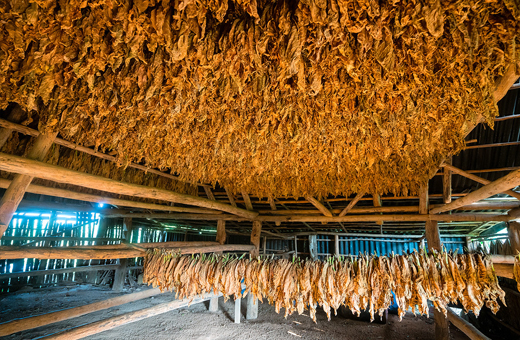Where Is Tobacco Grown
Tobacco is grown in 12 EU countries. The main producers are Italy, Bulgaria, Greece, Spain and Poland, which account for around 85% of the EU tobacco growing area. There is a trend towards smaller growing areas, mainly due to falling consumption of tobacco products.
The EU produces some 200,000 tonnes of dried tobacco leaves a year. Yields vary between 1 and 3 tonnes a hectare, depending on the variety. "Flue-cured" Virginia varieties account for almost 50% of output, "light-air-cured" Burley varieties around 15%, "sun-cured" or oriental almost 35% and other varieties ("dark-air-cured" and "fire-cured") less than 3%.
The EU produces less than 3% of global yearly raw tobacco production, and imports some 400,000 tonnes a year, mainly from Africa and America. It exports around 100,000 tonnes a year. World raw tobacco supply matches demand, with average market prices more or less stable since 2009.

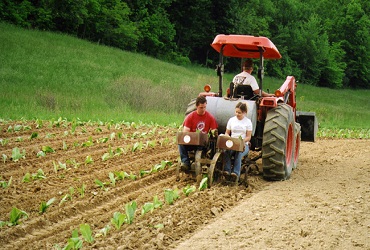
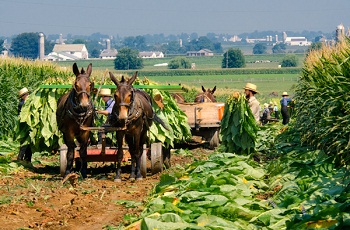
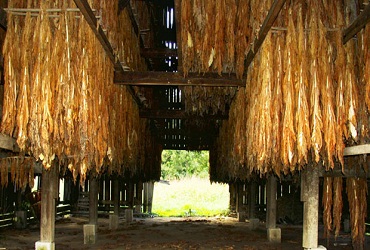
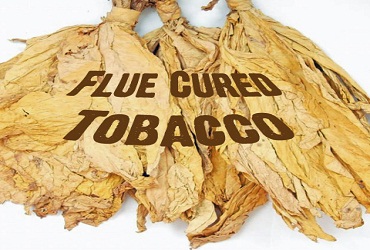 The most common curing process is known as flue-curing. Used mainly in the manufacture of cigarettes, the most common type of flue-cured tobacco is Virginia . This tobacco is also known as 'bright tobacco' because the heat-drying process gives the leaves a bright, golden colour. Originally from the south-eastern U.S. state of the same name, it is today the most grown tobacco variety in the world. Flue-cured tobacco is dried in a closed building with furnace driven heat directed from flues or pipes that extend from a furnace into the barn. The temperature of the furnace is gradually raised until the leaves and stems are completely dried. Flue-curing takes about a week and fixes the natural sugar of the leaf, which has a high sugar and a medium-to-high nicotine content.
The most common curing process is known as flue-curing. Used mainly in the manufacture of cigarettes, the most common type of flue-cured tobacco is Virginia . This tobacco is also known as 'bright tobacco' because the heat-drying process gives the leaves a bright, golden colour. Originally from the south-eastern U.S. state of the same name, it is today the most grown tobacco variety in the world. Flue-cured tobacco is dried in a closed building with furnace driven heat directed from flues or pipes that extend from a furnace into the barn. The temperature of the furnace is gradually raised until the leaves and stems are completely dried. Flue-curing takes about a week and fixes the natural sugar of the leaf, which has a high sugar and a medium-to-high nicotine content.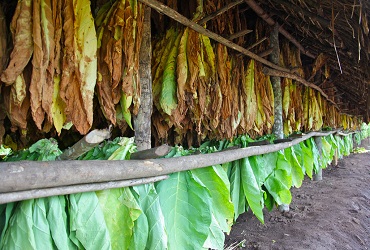 Some tobacco leaves are air-cured following their harvest. Air-cured tobacco is traditionally cured hanging in structures with a roof, but with open sides to allow air to freely circulate. As with flue-curing, the aim of air-curing is the timely removal of moisture from tobacco leaves. This process takes four to eight weeks: If cured too fast, the leaf will become patchy, if cured too slowly, the leaf will rot away.
Some tobacco leaves are air-cured following their harvest. Air-cured tobacco is traditionally cured hanging in structures with a roof, but with open sides to allow air to freely circulate. As with flue-curing, the aim of air-curing is the timely removal of moisture from tobacco leaves. This process takes four to eight weeks: If cured too fast, the leaf will become patchy, if cured too slowly, the leaf will rot away. 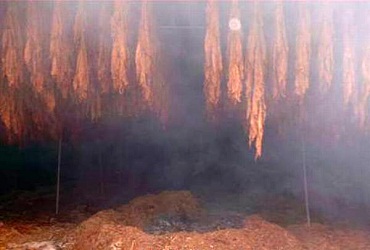 Although curing methods may vary, all fire-cured tobaccos are subjected to wood smoke to dry the leaves. It is the type of wood used to smoke the tobacco leaves and the amount of smoke exposure that gives fire-cured tobacco leaves their distinctive flavours.
Although curing methods may vary, all fire-cured tobaccos are subjected to wood smoke to dry the leaves. It is the type of wood used to smoke the tobacco leaves and the amount of smoke exposure that gives fire-cured tobacco leaves their distinctive flavours. A comparatively small amount of tobacco is sun-cured. Leaves are exposed to the sun to remove most of their moisture before being air-cured to complete the process. Of all sun-cured tobaccos, the best known are the so-called Oriental tobaccos of Turkey , Greece , in the area where before used to be yoguslavia, and Balkans. A more labour-intensive product to harvest, Oriental tobacco is characterised by high aroma from small leaves, being low in both sugar and nicotine.
A comparatively small amount of tobacco is sun-cured. Leaves are exposed to the sun to remove most of their moisture before being air-cured to complete the process. Of all sun-cured tobaccos, the best known are the so-called Oriental tobaccos of Turkey , Greece , in the area where before used to be yoguslavia, and Balkans. A more labour-intensive product to harvest, Oriental tobacco is characterised by high aroma from small leaves, being low in both sugar and nicotine.